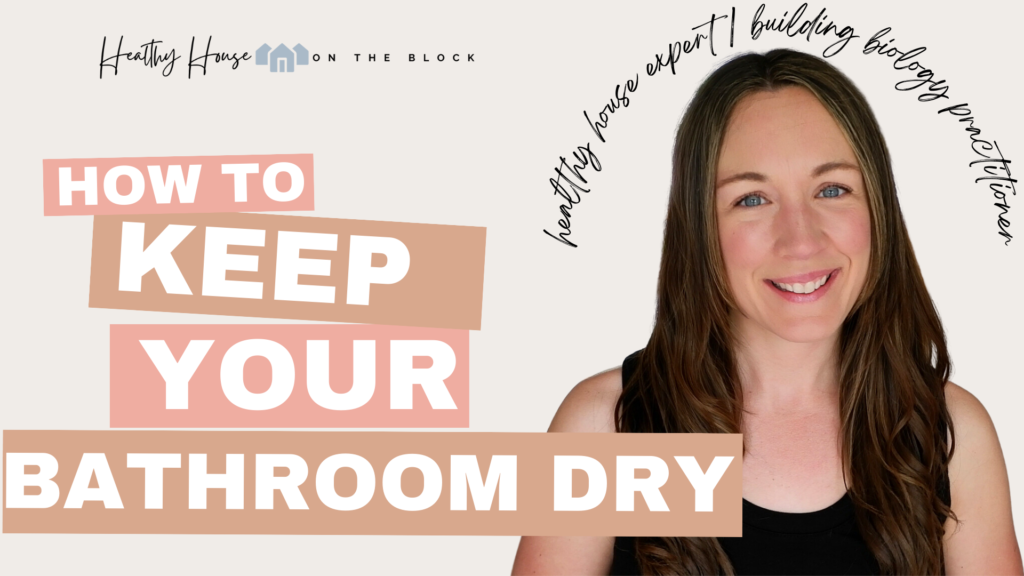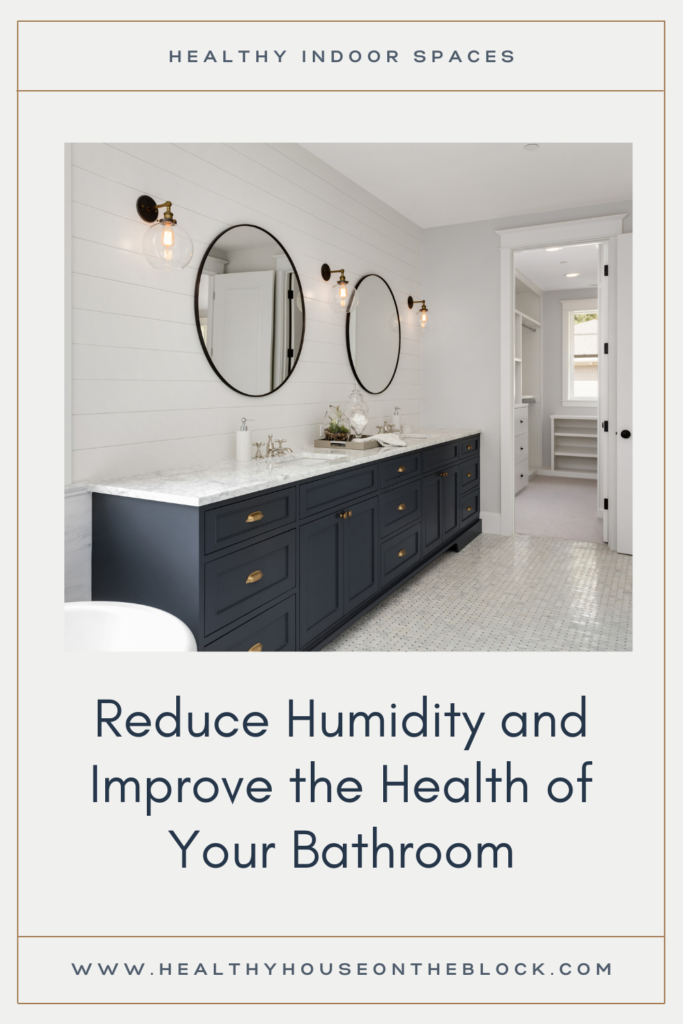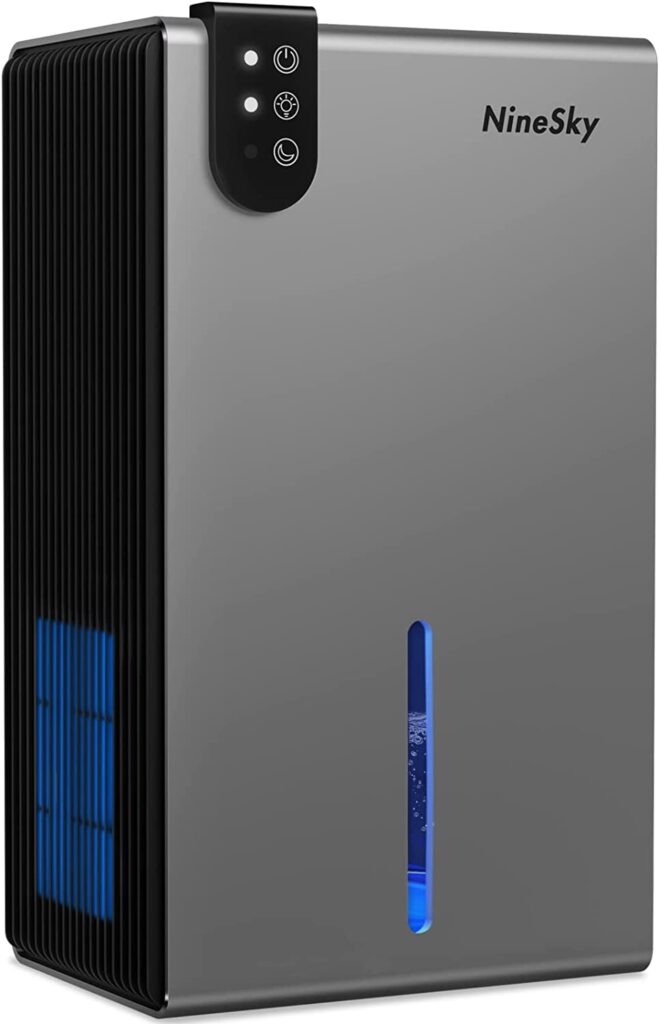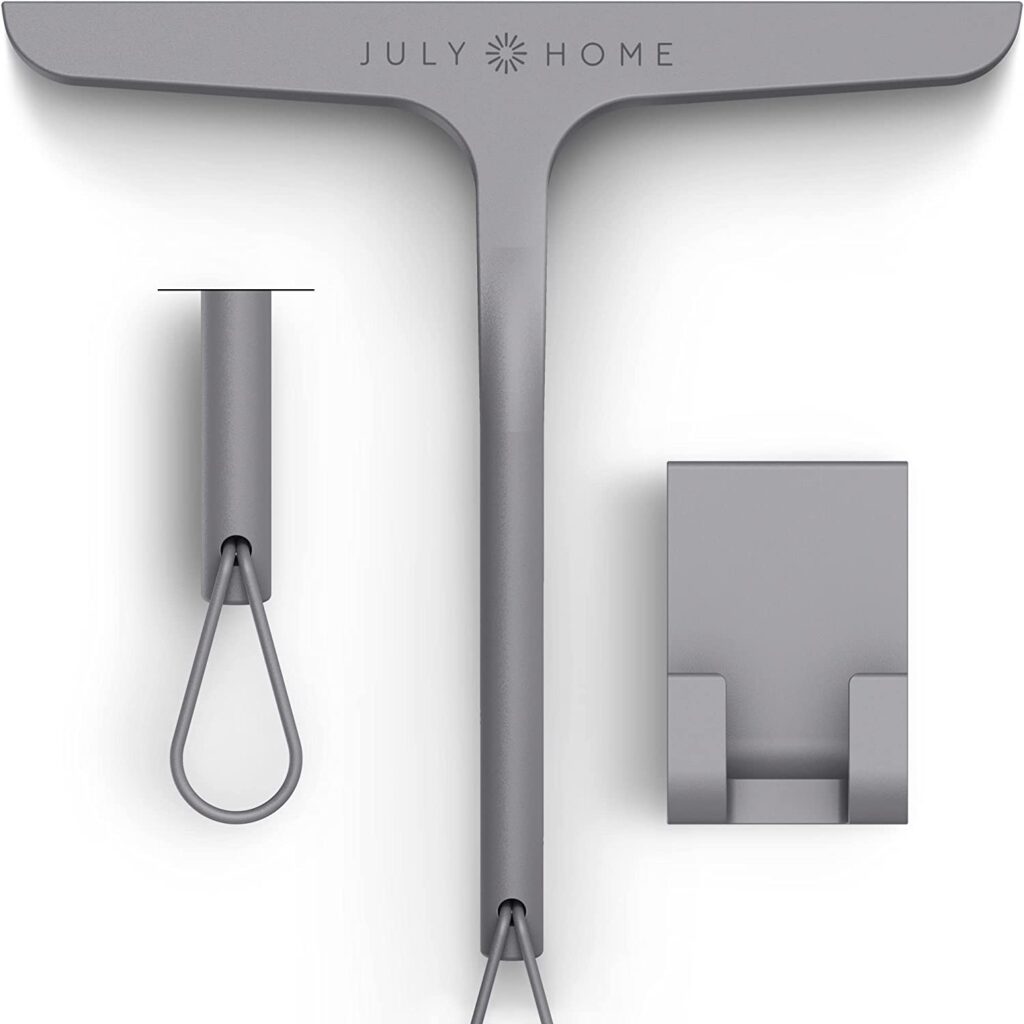
Mildew vs. mold is a question I get all the time, simply because we use the words together so much, but they’re so different in nature and in the problems they create. And one of the areas that these two hang out the most is in the bathroom. Bathrooms are notorious for mildew smell and mold that can grow on and under caulking.
The main reason a bathroom is home to these is that the bathroom rarely gets a chance to dry out completely. Depending on how much use the bathroom gets and if you’re home is naturally a humid environment, you can have a space that is PERFECT for mold and mildew to grow.
The real trick to keeping mold and mildew out of your space is to keep it as dry as possible. But there are actually several ways this can be done and you can attack the problem from several different angles to ensure that mold and mildew don’t appear at your house.
MILDEW VS. MOLD FOR OUR HEALTH
Mold and mildew often go hand in hand, however, they are not necessarily the same thing. These are both kinds of organisms that can grow in your home and both are in the fungus category.
Mold and mildew alike thrive in humid and damp environments, such as the bathroom. But they’re both very different in terms of their potential risk to our health. And so it’s important to understand the key differences in the mildew vs. mold question.
One main difference of mildew vs. mold is that mold tends to burrow as it grows, finding its way behind surfaces. Mildew, on the other hand, tends to stay on one surface and spread out. Mold also tends to look different visually when compared to mildew. Mildew has more of a powdery appearance, where mold looks more fuzzy or slimy.
And the BIGGEST way they’re different is that mildew can cause mild allergic response, which can be irritating as a negative health impact. But mold can cause long term damage to the nervous system and respiratory airways. It’s also been linked to mood changes, memory loss and even depression as it impacts our mental health.

ASSESSING YOUR BATHROOM FOR MOLD
One way to assess mold in your bathroom is by doing a visual inspection. You can simply just look around in the spots that mold likes to form in bathrooms. Some good areas to peak at include:
- Under cabinets
- Behind toilets
- Caulking in showers and tubs
- Grout in surrounds
- Dark places
- Closed in spaces
- Window sills & tracks
Another way you can determine if you have mold is by either an air test or a swab test of the dust in the room. An air test is usually performed by a professional and only takes a few minutes. From there a lab will analyze the spores and determine if the count is high or low depending on how many mold spores they find. Usually they can also tell you what type of mold spores make up the total count. This can be very helpful in determining if you have a big problem on your hands.

HOW TO REMOVE MILDEW
Mildew is a MUCH easier compound to remove when we’re comparing mildew vs. mold. Mold can take professional measures to get clean, but mildew is a much milder beast in and of itself.
Mold mildew you find in your bathroom can be cleaned up with 3% hydrogen peroxide. You can use this on bathroom tiles and tub grout to get rid of this issue.
Another option is to use a mild dish detergent or white vinegar diluted with water. And finally, you can use essential oils such as tea tree oil or thyme oil to clean, which will also prevent the mildew from coming back.

BATHROOM PROJECTS TO REDUCE MOISTURE
If you’re looking for a fix that will last and prevent you from having to deal with high levels of moisture day in and day out, you can consider one of these larger projects to help impact your space.
Bath Fan Installation: A bath fan is one of the best ways to combat moisture in a bathroom. Most bathrooms have one, but you may want to improve your space with a stronger fan to pull out more moisture from the air. Make sure that your bath fan is properly connected to push air out of your home and out of your attic, safely to the outside.
In Floor Heat: The issue with many bathrooms is that the room is much cooler than the moisture droplets from the shower, creating condensation on everything. By installing floor heat, you can actually reduce the amount of condensation present and in turn reduce the humidity levels in the bathroom. Plus, who doesn’t love a nice warm floor when they step out of the shower.
Demistable Mirrors: A demister pad is added to the mirror to heat up the surface. Again, because often mirrors are much colder than the air coming from the shower, which creates condensation on the mirror, raising the overall moisture in the bathroom. A demistable mirror works because the surface of the mirror is heated to prevent any sort of condensation or build up of steam.

HOW TO MAINTAIN A DRY BATHROOM
And while there are big projects you can tackle, there are always small changes you can make to your day to day habits to create a bathroom that has lower levels of humidity.
Run the Bath Fan: The simplest way you can reduce moisture is to run your bath fan anytime you use the shower or bath. Run the fan during use and then for at least 20 minutes after you’re done. This will help ensure that even the humid air that sticks around will be drawn out by the fan.
Keep Windows Open: If you live in a climate that’s not overly humid and you can stand to have the window even just cracked during use, it’s a great way to get fresh air in and let the humid air out of your room. Just remember to close them after use to prevent too much energy loss.
Squeegee: Wiping down or using a squeegee on any shower walls or surfaces can help reduce humidity levels drastically. Often humidity sticks around in the bathroom because so much water ends up evaporating directly into the space. However, if you remove the moisture, you’ll also remove the source of the high humidity.
Hang Up Towels & Rugs: Make sure rugs and towels that get wet after your shower or bath get properly hung to dry. And if you have the option, you can even dry these things in a room besides the bathroom that might have more ventilation. A heated towel bar is another great way to make sure towels get dried off quickly. Wet towels and rugs release moisture into the air the longer they sit wet, so quick dry times reduce moisture levels in the air.
Open Vents: Again, the reason so much condensation forms in the bathroom is because of the cold air inside the space. Make sure that your vents are open, which will not only allow air flow around the room, which will naturally dry things out. But it will also help reduce the amount of condensation that forms on walls and surfaces.
Using Plants: Know what type of plants you’re putting into your bathroom. Some plants will help absorb moisture, and other plants will make the room even more humid as they hold moisture in and release it as needed. Plants that help reduce moisture include:
- Peace lily
- Boston fern
- Palms
- Chinese evergreen
HEALTHY HOUSE APPROVED BATHROOM PICKS
Portable Dehumidifier: A small portable dehumidifier is a great option for spaces that may not have a bath fan or that have extra trouble drying out.
Damascus Clay Mats: These mats actually absorb moisture and then dry out completely when you use them. It’s a great way to keep the bathroom dry after bathing because the mat doesn’t need to be hung to dry, it simply uses the moisture and dries your feet immediately.
Squeegee: Use a squeegee each time you shower to really make an impact on your space. The more moisture you remove from the walls, the less will evaporate into your air.
Toxin Free Caulking: And when you need to fix some of your caulking an seal it up to prevent moisture from getting behind it, use a toxin free, quick cure option that won’t add any toxins into your space.

No matter how you go about detecting mildew vs. mold, or cleaning it up or preventing it, there are always healthier habits you can form. These habits will help you create a space that will support your health and create a home that supports your health and wellness.







